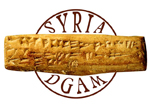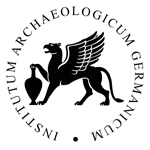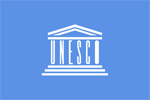Digitizing the Inventory of the Museum of Deir ez-Zor (Syria)
Mission statement
In a world of conflict, war, looting, and total destruction inventories of immovable, movable, and intangible cultural heritage are indispensable. Over centuries these inventories were written by hand on perishable materials – and often destroyed also even if deposited apart of the objects they listed.
Obviously modern digital and illustrated inventories have the advantage that they may be kept at several independent localities and thus be protected from destruction. Furthermore, they can be disseminated quickly to involved authorities and institutions; they are useful identifying and tracing destroyed, looted, or robbed items; and they are an indispensable tool for restoration and reconstruction after the end of any given conflict.
During the past six decades the “Direction Générale des Antiquités et des Musées” (DGAM) has created an impressive decentralized landscape of Museums in Syria. 36 in total number, the National Museums of Damascus, Aleppo, and Palmyra are known worldwide. Unfortunately, numerous Museums have been and still are threatened by destruction and/or looting during the recent years of conflict in Syria. In spite of all adversities the DGAM has done an excellent job protecting the country’s cultural heritage. Nevertheless, without digital inventories, efforts to manage, protect and prioritize Syria’s heritage, and to deal effectively with future developments are held back. Consequently, DGAM has built up a database of inventories of all Syrian Museums during the past three years.
The National Museum of Deir ez-Zor
Founded in 1974 on the bases of a donation of a private collector from Deir ez-Zor the National Museum became the focal point of Syrian and international excavation missions conducted in northeastern Syria. The construction of a new building was completed in 1992, the permanent exhibition was created in a joint venture of the DGAM and the Freie Universitaet Berlin, and in May of 1996 the Museum was inaugurated for the public.
When the war in Syria started in 2011 the Museum was closed and the objects displayed in the permanent exhibition were stored in the basement. Since 2013 parts of the city of Deir ez-Zor were controlled by ISIL fighters; the demarcation line between them and the Syrian military forces proceeded only 200 m east of the Museum. In two spectacular actions in 2014 and 2015 DGAM has evacuated thousands of objects from the threatened Museum and saved them in Damascus.
The project and its partners
In 2014 DGAM and Freie Universitaet Berlin agreed to conduct a pilot project digitizing the inventory of the National Museum of Deir ez-Zor. DGAM will digitize the Museum registration book and recently acquired information; the FU-part is based on file cards and other documents saved in Berlin since the cooperation on the permanent exhibition. The German part of this joint venture is sponsored by the Foreign Ministry of Germany. This joint venture has been affiliated to the "UNESCO-Emergency Safeguarding of the Syrian Cultural Heritage Project"; it cooperates with the "Syrian Heritage Archive Project" (SHA) of the German Archaeological Institute (DAI), the ICOM-Comité International pour la Documentation (CIDOC), and with shirin (Syrian Heritage in Danger: an International Research Initiative & Network).
 |
 |
|||||
 |
 |
 |
||||
 |
||||||
Aims of the project
During the past decades, items from national and international excavation missions have increased the collection of the National Museum of Deir ez-Zor massively. Essentially the inventory consists of objects which have received a Museum ID and those which have not.
In a first step the data of the 21.867 officially registered objects, that is those which have a Museum ID, will be transferred into a database. The denomination of the data fields follows the Object-ID-standard. The aim is to produce an illustrated list in English and Arabic with diagnostic object data using the Getty Art and Architecture Thesaurus (AAT) und geographical reference works such as geonames and DAI Gazetteer.
In a second step the database will be complemented by those objects that are kept in the Museum but have not received a Museum ID.
Progress in 2015
When the project started in July, one of the emerging problems was the compatibility of the used data systems. Therefore, in August and November 2015 two meetings on IT procedures, workflow, and improvement of cooperation were held in Berlin. It was decided to apply the Object-ID-standard for international compatibility. In the end, the transfer of data will be managed by the XML harvesting schema LIDO for which tools will have to be developed. The target system will be based at the DGAM.
By the end of 2015 the Berlin database contained about 2500 entries; all the available documents, especially photographs had been scanned and digitized.
Progress in 2016
Relaunching work in May it was aimed to complete the "Illustrated List of Officially Registered Artifacts in the Museum of Deir ez-Zor" and start on a list of officially delivered artifacts to the Museum of Deir ez-Zor by the excavation of Tell Schech Hamad. Based on the card files and other materials in Berlin the Illustrated List of officially registered artifacts was nearly completed by the middle of September waiting for the dataflow from the DGAM to be complemented. Under the umbrella of UNESCO a meeting of DGAM staff and the Berlin team was arranged on September 19 and 20 in Beirut on the issue of dataflow. Early in October the Berlin team was informed that the Syrian government had ruled out any dataflow. The focus of the Berlin team now shifted to listing those objects that the excavation missions had officially delivered to the Museum of Deir ez-Zor.
Progress in 2017
In view of the envisaged termination of the project by the end of 2017 the aim was to complete the "Illustrated List of Officially Registered Artifacts in the Museum of Deir ez-Zor" based on the material in Berlin. This was achieved finalizing 3883 datasets in an English and Arabic version. Furthermore, the illustrated list of those artifacts that the excavation mission of Tell Schech Hamad had delivered officially to the Museum of Deir ez-Zor was finished featuring 4560 datasets out of which 1950 have received a Museum inventory number (ID) that is 42.76 %. The illustrated list of officially delivered artifacts by the excavation of Tell Bderi remains incomplete.
Team
Head of the Team |
|
Rama al-Badra |
Arabic Translations |
Data Recording and scientific Edition |
|
Georg Neumann |
Data Recording and scientific Edition |
Lilia Kwik |
Data Recording |
Christoph Forster |
Programming ; datalino Berlin |
